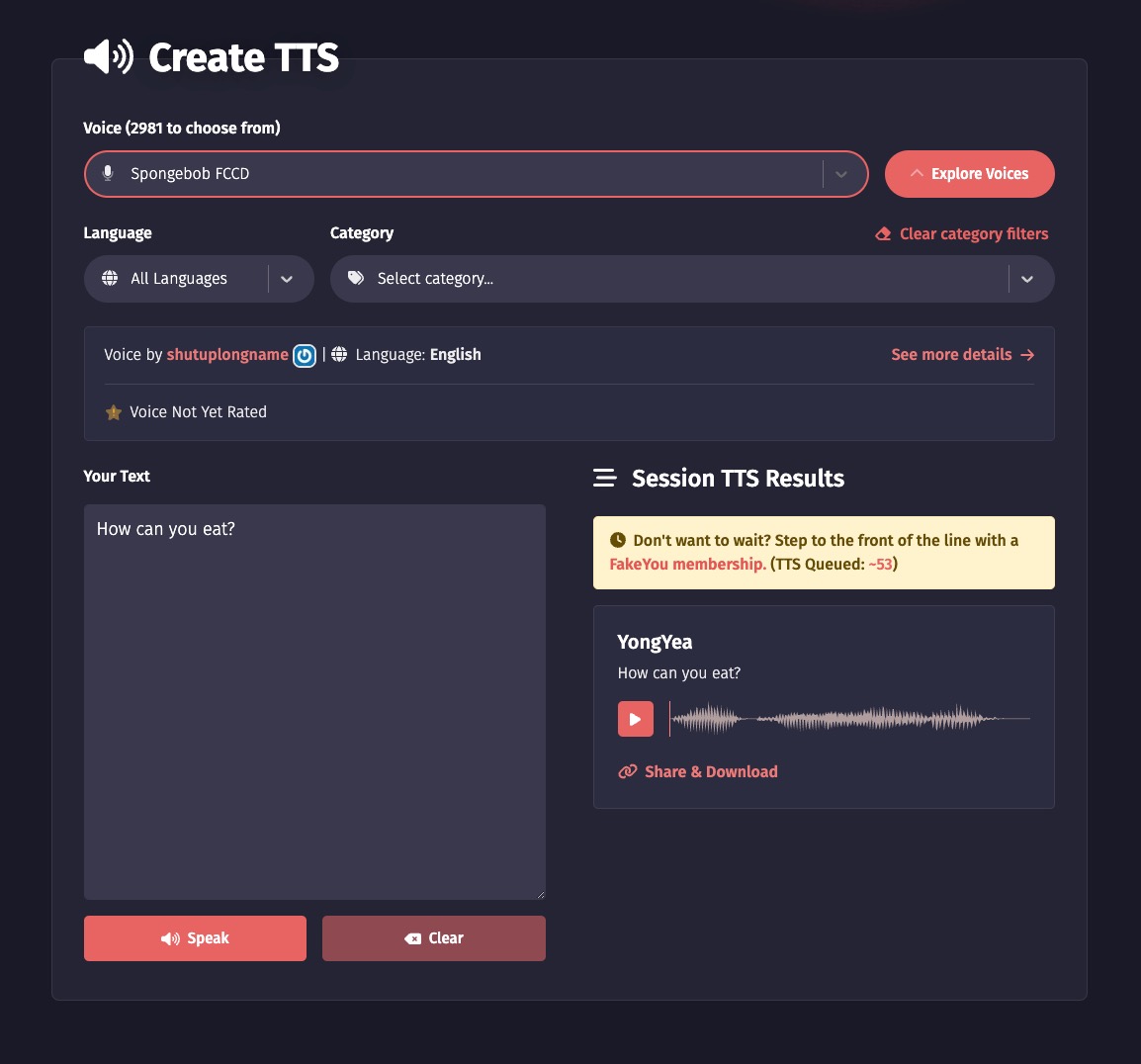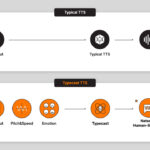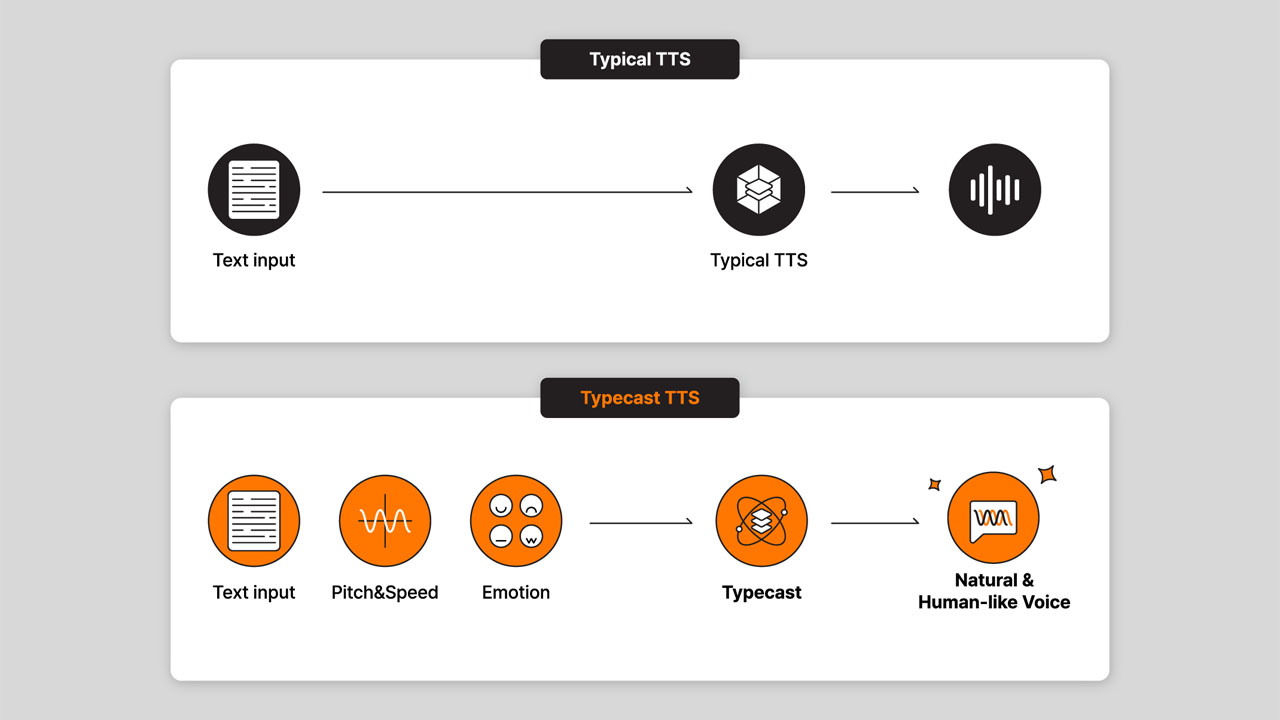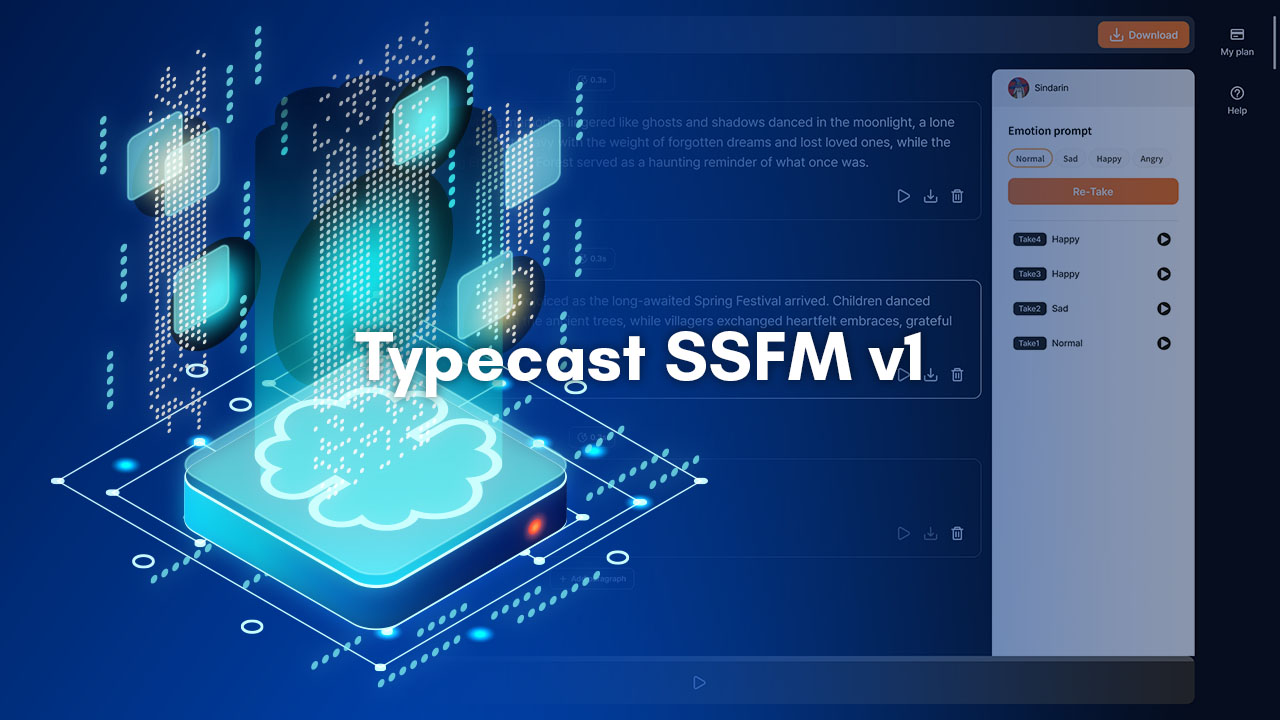There is quite a big hype these days regarding speech technology and more specifically, text-to-speech. One TTS platform boasts a wide variety of different characters and voices, FakeYou is a text-to-speech haven where you can select and use most of your favorite characters, from President Barrack Obama to Spongebob Squarepants. If you want a character, you can most likely find them on FakeYou!
FakeYou is the perfect app to use when you want to prank your friends or create original content all while using a culturally popular character voices. It also has a very active community that will help develop new types of popular voices. Keep in mind that most of the voices are just impressions rather than the actual thing, but that’s pretty much what (Deep) FakeYou is about!
What is FakeYou?
To put it simply, FakeYou is a community driven text to speech voice generator program. Its name, FakeYou, is a derived from the word Deepfake which is a port manteau of ‘Deep Learning’ and ‘Fake’. FakeYou presents itself as something similar to Deepfake video but for audio instead.
FakeYou has over 2000 voices to choose from, most of the voices are impressions of famous characters such as Sonic the Hedgehog, Spider-man, and even celebrities like Donald Trump with text-to-AI voice technology.
The voices themselves are mostly impressions of these popular characters done by community members or the developers themselves.
One of the greatest perks of using FakeYou is their lively community and their developer’s active participation. If there are any voices that you’d like to request, FakeYou has definitely got you covered.
However, you may be wondering how their developer’s get Text to speech to actually work? Well we’ll explore that soon enough.

How does FakeYou Text to speech work?
Text-to-speech technology has come a long way over the years, transforming written text into spoken language with remarkable accuracy.
This technology has many practical applications, such as helping people with disabilities to communicate more effectively, or enabling virtual assistants to have more natural-sounding conversations.
FakeYou uses some of the basic principles of text to speech technology but has developed a large catalog of different types of popular characters that can be used. In order to understand how FakeYou utilizes text to speech technology, it would be better to learn how text to speech actually works.
But how exactly does text-to-speech technology work?
The process of transforming written text into spoken language involves several key steps:
- Text Analysis: The first step in the process is to analyze the written text. This involves determining the pronunciation and phrasing of words and sentences, as well as any context-specific information that may impact the output.
- Text to Phoneme Conversion: The next step is to convert the written text into phonemes, which are the basic units of sound in a language. This process is often accomplished using a set of linguistic rules or a pre-existing language model.
- Phoneme to Sound Waveform Generation: Once the text has been converted into phonemes, the next step is to generate sound waveforms that represent the spoken language. This is accomplished by mapping the phonemes to the sound waveforms that are associated with each.
- Sound Waveform Synthesis: The final step is to synthesize the sound waveforms into a seamless, natural-sounding output. This is done by combining and smoothing the waveforms to create a continuous, believable voice.
The quality of text-to-speech technology can vary greatly depending on the development method, language model, and other factors.
However, advances in artificial intelligence and machine learning have led to remarkable improvements in the accuracy and naturalness of text-to-speech outputs.
What makes FakeYou so popular?
Unlike other TTS programs or softwares, FakeYou has one of the largest array of different types of popular voices. There are so many to choose from, that there are even multiple types of voices for the exact same character (done by different impressionists).
FakeYou also has a large international following in where the program also supports voices in different languages. It’s really cool to see voiceover support for famous characters in different languages. Have you ever wondered how Bart Simpson would sound like in Spanish? Well, you’ll be able to do so by trying out FakeYou.
The program itself saw a surge in popularity during early 2022 and has grown into quite a big community. The community’s constant input and developer’s regular support has made the platform even bigger over the years.
How can I use FakeYou text to speech?
FakeYou is very simple to use, all you need to do is check out the FakeYou homepage. FakeYou is a cloud-based service where you do not need to download or install the app to any device.
You can simply use their service on their homepage. Select the voice that you want (over 2000 voices to choose from) and type away! You may listen to the output upon clicking on the ‘Speak’ button.
There are some other advance options to help you discover the voice that you want, you may select the language or even category of voice that you’re looking for.
Most, if not all the voices are developed by the community and developers themselves. There are plenty to choose from, and you may always request a new voice from the developers.
They also provide you the option of cloning your own voice for a fee. This could be a great feature if you plan to develop your own content using your voice without actually having to speak!

Why is FakeYou not working for me?
This could be attributed to several issues, but one of the easiest ways to check is to try the following:
- Restart your browser – You can reload your browser to see if its a page loading issue. It could also be a temporary glitch which is preventing you from accessing the program.
- Try opening in Incognito mode – Most browsers have the option to open in incognito mode, this mode makes it so that browsing data or even history doesn’t get saved on your device.
- Remove unwanted extensions – It is common for most people to use browser extensions, but having too many could also conflict with the cloud-based application. Try disabling some of them and check to see if it works.
- Uninstall your antivirus program – There are some third-party antivirus programs or even firewall programs that may conflict or interfere with the browser’s functionality. This could cause FakeYou to not work properly.
- Try a different browser – It is not uncommon for browser to come into conflict with a program like FakeYou. You may want to try out a different browser
There are several other reasons in why you may not be able to access FakeYou, the best solution would be to ask one of the developers through discord or by contacting them directly!
The Issues with FakeYou
While FakeYou has a much larger collection of different voices and character impressions. There are several caveats to having such a large library. One of them would be quality.
As you’ll have to keep in mind, FakeYou’s voices are impressions rather than original characters. This means the voice sample data they’ve collected are not done by the original voice actor but rather someone else who can mimic the voice.
While the voice may sound similar to the original character, the accuracy and quality could vary depending how well the impressionist could mimic the character.
Another limitation to FakeYou would be its lack of options to actually control the voice output. There are alternative TTS services which allow users to change the emotions, pitch, speech pace, and even tone. FakeYou currently does not support any of these features, which limit the creative flexibility of the creator.
However, if you want to simply use the TTS service to get a quick giggle or prank a friend, FakeYou is the perfect app for you. Just keep in mind, that due to the popularity of the service, there is also a queue you’ll have to wait in order to listen to your file (unless you choose to go premium).
FakeYou Alternatives or Websites like Fakeyou
While FakeYou boasts of having many different types of voices, you may want to find a text to speech service which gives you a greater amount of control over the voices. If so, then you’ll want to try out Typecast.
Typecast is a virtual human actor and AI voice generator service which has realistic sounding voices. Typecast utilizes Deep Learning and Generative AI to develop a more natural speech that can match the tone and sound of actual humans. If you want to create text to speech with emotion, you can give Typecast a try.
Typecast has an elaborate and intuitive editor to help you create the voice and sound that fits your content. There is a simple side menu which can help you manipulate the expressions of the text you’ve typed.
With Typecast, you can save hundreds to thousands of dollars from hiring a production studio or professional voiceover. The most interesting part about Typecast is the quality of the voices only improves over time as more voice data is collected. Soon enough, you’ll eventually be able to manipulate a voice to sound exactly how you want it!

Which is the best text to speech service for you?
If you plan to create content for gags, pranks, or quick fun using your favorite celebrity or character, then FakeYou is the perfect app to get started with when it comes to text to speech.
If you want to build professional content for marketing such as Product Explainers, or corporate training such as Compliance videos, you may want to use a text to speech service such as Typecast, which yields higher quality of voices and more control over voice output.













